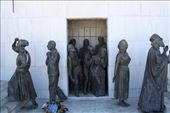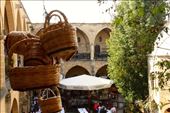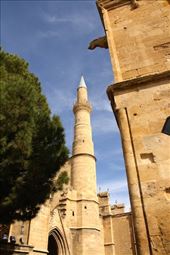TO SAY THAT UNDERSTANDING CYPRUS IS COMPLICATED is the understatement of the year. The island, which has been coveted for thousands of years for its strategic location, has had three main suitors since 1878 — Greece, Turkey and Great Britain. Attempts to work out an agreement suitable to all finally failed in 1974 when the island was finally divided and today United Nations peacekeepers patrol the "Green Line" border. The Republic of Cyprus is the legally recognized government by the UN while only Turkey recognizes North Cyprus.

Divided we stand
Nowhere in Cyprus is the problem more evident than Nicosia. It is the last divided capital in Europe, now that Berlin has been re-united, even though both parts are surrounded by the same Venetian wall. The Republic of Cyprus calls the city by the Greek name Lefkosia while in the Turkish north it is Lefkosa — but we will stick with the British Nicosia.


Liberty Memorial (South Nicosia) Buyak Han (North Nicosia)
We easily crossed the border on foot a few hundred meters from the Centrum Hotel in the south but the receptionist refused to put a call through to a car hire firm in the north because she didn’t recognize North Cyprus as a country. To her, the daughter of a Greek refugee from the north, it remains the “occupied territory.” The Greek part is obviously Orthodox where former mosques are now churches. In the north, former Orthodox churches are now mosques.


Archbishop's Palace (South Nicosia) Selimiye Mosque (North Nicosia)
The south, even within the old city walls, looks as prosperous as any European city with the same upscale shops and Western fast food chains you would find there. Just across the “green line,” Old Nicosia more resembles an Istanbul souk with mosques, caravansaries turned restaurants and Turkish baths. And the haunting call of the muezzin floats over both north and south five times each day.